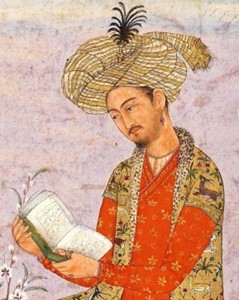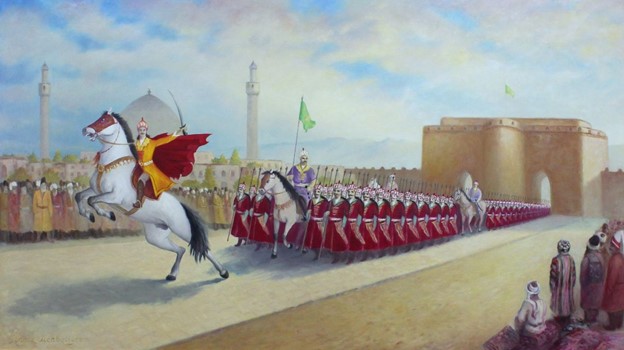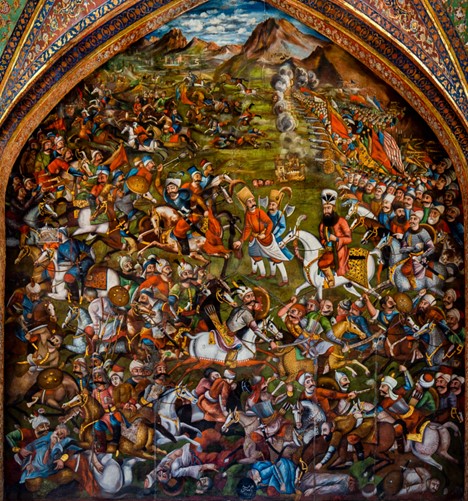The Ottoman Empire has remained embedded in European historical consciousness as one of the most powerful and long-lived empires created by Muslim peoples. The politico-military expansion of the Muslims continued even in the eastern part of Anatolia, extending over the ruins of the Persian Empire, as well as in the Indian subcontinent.
The founders of the Ottoman, Safavid and Mughal Empires established their state territories by adopting the fragmentary policy of Greco-Islamic philosophy, influenced by the Iranian administration and the Turkish-Mongol military domination, which have their origins in the Timurid Empire.
After the fall of the Abbasid Caliphate (1258), founded by the uncle of the Prophet Mohammed, Abbas ibn Abdul-Muttalib, the Muslim peoples began to fragment the territories under the Baghdad-led caliphate.
On the ruins of the former caliphate, Timur Lenk, the first Turkish-Mongol emir, laid the foundations of the Timurid Empire and the Timuridian dynasty, with its capital at Samarkand. The decline of his empire dates back to 1467, when part of Persia was lost to Azerbaijan, the Han Khanate and the Ağqoyunlu confederation.
Zahir-ad-Din Muhammad Babur was born on February 14, 1483, in the northeast of the Timurid Empire, in the city of Fergana. He comes from a noble family, his father being Umar Sheikh Mirza, governor of Fergana and a right-wing descendant of Timur Lenk, and his mother, Qutlugh Nigar Khanum, a descendant of Genghis Khan.
Umar Sheikh Mirza died in 1494, while feeding his pigeons, and his dovecote collapsed in the ravine below the palace, thus making eleven- year-old Babur the ruler of Fergana.
year-old Babur the ruler of Fergana.
In 1497, at the age of fifteen, Babur (on the right – idealized portrait from the seventeenth century) led an offensive on the city of Samarkand, located in the Uzbek Khanate. After a siege of seven months, Babur manages to conquer it, but, nevertheless, after 100 days he loses control of the city. During the siege, a group of rebels took control of the city of Fergana, which became part of the Uzbek Khanate, led by Muhammad Shaybani.
Defeated, with no hope and no country to return to, Babur chooses to retreat into exile for a period of three years; for three years, Babur concentrated on building a strong army. In 1504, Babur besieged and conquered the city of Kabul, thus establishing the Mogul Empire.
Establishment of the Safavid Empire
While the Ottomans, led by Osman I, continued their expansion in western Anatolia, on the border with the Byzantine Empire, Safi-Ad-Din founded the Safavid Order in eastern Anatolia, which ruled the city of Ardabil.
Safi-Ad-Din was a Sunni cleric of Kurdish descent who was born in 1252 in Ardabil, northwestern Iran, and founded the Safavid Order, a mystical Islamic order that promotes Sufism and it held a prominent place in in Iranian political life.
Farrukh Yassar, the last independent leader of the Shivanshah region, along with Ağqoyunlu, a Turkish tribal federation that controlled most of Iran, captured the city of Ardabil in 1488, killing Ali Mirza Safavi, the penultimate leader of the Safavid order, and the leader of the city of Ardabil. Ismail, the seven-year-old son of Ali Mirza Safavieste, is forced to hide in Gilan, under the protection of Sultan Ali Mirza Karkiya.
In 1500, at the age of 12, Ismail united the Ottoman tribes of eastern Anatolia and the Oghuz clan of northwestern Iran, commanding more than 7,000 soldiers and heading for Shivanshah. Ismail defeated Farrukh Yassar, conquering Cabani and Baku and becoming the leader of the Shivanshah region.
Ismail makes a pact with Constantine II, King of Georgia, and Alexander I, King of Kartli, to attack Tabriz, the capital of Ağqoyunlu. Ismail conquered Tabriz in 1501, proclaiming himself Shah of Azerbaijan, thus unifying the Turkish tribes of Anatolia and the Kurdish tribes of Syria, while establishing Shiite Islam as the official religion.
In 1502, Ismail defeated the last army of Ağqoyunlu, continuing his military and territorial expansion, proclaiming himself Ismail I Shah of Iran, laying the foundations of the Safavid Empire.
Continuing his military and political expansion, Ismail I conquered Baghdad in 1503, destroying the last Sunni sites and remnants of the Abbasid Caliphate. The Safavid Empire continued its territorial expansion, and from 1510, Iran, southern Dagestan, Mesopotamia, Armenia, and eastern Anatolia were part of the empire.
In the east of the Safavid Empire, the Uzbek Khanate, led by Muhammad Shaybani, becomes a threat to both Ismail I and Babur. Under these conditions, the two leaders formed a coalition in 1510, fighting together against the Uzbek Khanate. In 1512, Babur, along with the armed forces of the Safavid Empire, launched a military campaign against the Uzbek Khanate to retake the cities of Samarkand and Fergana.
Babur leads an army of about 60,000 soldiers and manages to conquer the city of Samarkand for a short time. Muhammad Shaybani’s armies prepare a military offensive and Samarkand becomes part of the Uzbek Khanate again, destroying the armies of the two allies and forcing Babur to retreat to Kabul.
The inevitable clash with the Ottoman Empire
The expansion of the Safavid Empire drew the attention of the Ottoman Empire, not for military success in Persia, which was concerned about the expansion of Shiism in the Middle East. Selim I, the sultan of the Ottoman Empire, declares war on the Safavid Empire to stop the spread of Shiism in favor of Sunni Islam, the official religion of the Ottoman Empire.
The Battle of Chaldiran took place on 23 August 1514; Ismail I is defeated by Selim I and the Ottoman Empire annexes eastern Anatolia and northern Iran, including the city of Tabriz. Selim I decides to completely sever the ties between the Safavid Empire and the rest of the world, in order to stop the spread of Shiism.
Battle of Chaldiran, mural in the Chehel Sotoun Palace in Isfahan (photo: Xiquinho Silva / Wikimedia Commons)
After the Battle of Chaldiran, Ismail was gradually falling into heavy drinking of alcohol. He died at the age of 36 and the Safavid Empire would be ruled by his 10-year-old son, Shah Tahmasp I.
In eastern Iran, Babur continued the territorial expansion of the Mogul Empire in India, conquering Punjab in 1524 and Delhi, Agra and the Gondwana region in 1527. Located in Agra, far from home, Babur died in 1530, at the age of 47, and the expansion of the Mogul Empire is perpetuated by his son, Humayun.
Zahir-ud-din Muhammad Babur and Ismail I went down in Islamic historiography as the greatest conquerors of the Middle East in the Middle Ages.
Top photo: Ismail proclaims himself Shah at the entrance to Tabriz, painting by Chingiz Mehbaliyev (photo: Wikimedia Commons)
Bibliography
Stephen F. Dale – The Muslim Empires of the Ottomans, Safavids, and Mughals-Cambridge University Press (2010)
Eraly Abraham – Mughal Throne-Orion Publishing Group (2004)
Hamid Algar – Mīrzā Malkum Khān: A Study in the History of Iranian Modernism-University of California Press, (1973).



